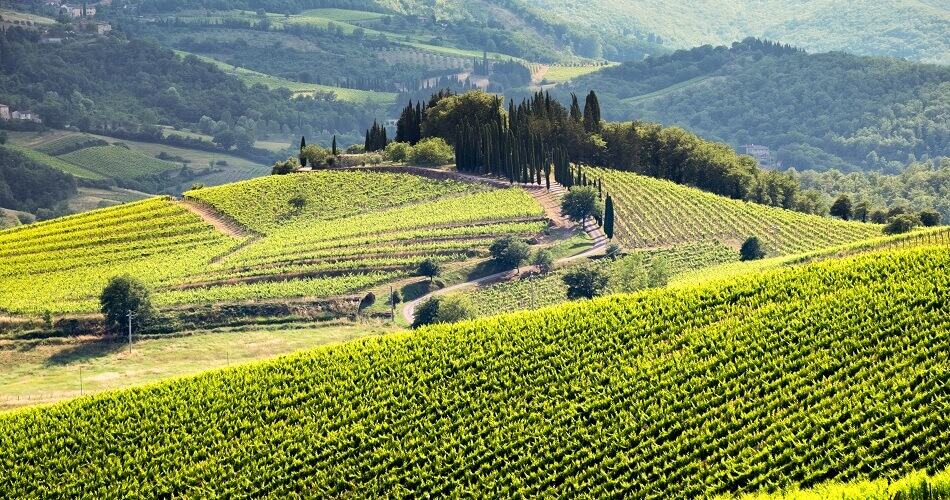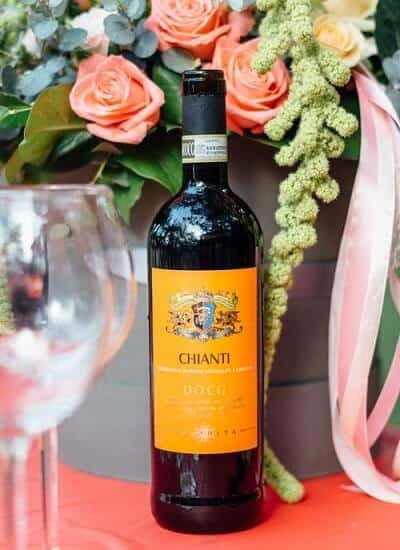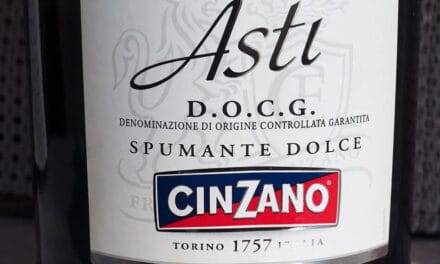WHAT IS CHIANTI CLASSICO?
Chianti Classico is a high-quality red wine from the Italian Tuscany region. It is acidic, tannic, and has a medium body. With flavors of red and black fruits and intense earthy notes, it offers a wide variety of aromas. Classico wines are the oldest and, according to many wine lovers, the best wines from the region. They are subject to strict regulations by the Consorzio Vino Chianti Classico. This organization ensures the quality of Classico wines by supervising vintners’ production processes from grape growing until bottling. Besides, it takes measures to protect the appellation from fraudsters and imposters.What is Chianti Classico Made From?
The DOCG regulations mandate that at least 80% of the grapes for Classico wines must be Sangiovese. For the rest, winemakers may use other red varietals like Canaiolo Nero, Colorino, Merlot, or Cabernet Sauvignon. Since 2006, they cannot use white grapes anymore.Where Does Chianti Classico Come From?
Classico wines come from the Chianti Classico region in the Tuscany region in Italy. Originally, it was just called Chianti. But when lawmakers added more and more subregions to the appellation, winemakers in the original area wanted to distinguish themselves. So they changed the name of their home region by adding the Classico label. Today, the Chianti Classico DOCG contains eight municipalities. Besides vineyards, you can find many olive orchards in this hilly area.The Different Types of Chianti Classico
Within the appellation, winemakers create different types of wines. These types differ primarily in their aging process:- Chianti Classico Gran Selezione is the top tier. Vintners produce these wines from only the best grapes of a single estate. Furthermore, they age them at least 30 months, including three months of bottle aging.
- Chianti Classico Riserva is the second tier. Wines in this category age at least 24 months with three months in bottles.
- Chianti Classico Annata is the third and lowest category that is not subject to any aging requirements.
WHAT IS CHIANTI?
Chianti is a red wine from the Tuscany region in Italy. Typically, it is a blend of Sangiovese grapes and other varietals such as Cabernet Sauvignon, Syrah, or Merlot. The wine is high in acidity and tannins and has a light to medium body. It offers flavors of red fruits and herbs as well as earthy notes.There are many great Chianti wines made outside the Classico appellation. They are subject to regulations as well, but these regulations are less strict.What Is Chianti Made From?
The most important rule aims at varietals: 70% of a Chianti wine must be Sangiovese. The rest can be native red grapes like Canaiolo Nero and Colorino or international varietals such as Merlot or Cabernet Sauvignon. Vintners may also use white grapes as long as they do not contribute more than 10% to the blend.No matter which grapes they use, winemakers must cultivate all grapes for their wines within the Chianti appellation. They may not import grapes or wines for blending from other parts of Italy or from abroad.Where Does Chianti Come From?
Chianti wines come from the Tuscany region as well. The Chianti DOCG appellation is located in Central Italy, close to the Western coast of the country. It stretches between the cities of Florence in the north and Siena in the south. The region’s rolling hills protect the vines from wind and thus provide the optimal conditions for growing Sangiovese grapes.Today, it consists of all the areas that were not part of the original Chianti region. Or in other words, it is the leftover after the renaming of the Classico DOCG (more details in the section about the region’s history).Within the region, there are seven subregions. Each of them produces regional wines with distinctive names and winemaking rules. These are their names:- Colli Aretini
- Colli Fiorentini
- Colli Pisane
- Colli Senesi
- Montalbano
- Montespertoli
- Rufina

The Chianti Region in Tuscany, Italy
The Different Types of Chianti
Like its Classico counterpart, the Chianti region is home to different types of wine. These are the variations you can find:
- Wines labeled as Chianti are blends composed of grapes from multiple of the formerly mentioned subregions. They are the most basic wines from the area.
- Regional wines come from one of the seven subregions. For instance, a Chianti Rufina comes from the Rufina area. A vintner who wants to use this label has to cultivate all grapes within this subregion’s borders.
- Chianti Superiore is a quality label that has existed since 1996. A wine must age at least nine months, with three months in the bottle, to carry this label.
Other Wines from the Region
Some wines do not have the name Chianti on the label, although they technically could carry this label.
For example, wines from the Montevertine region go by the name of Toscana Rosso. Producers from that area abandoned the Chianti appellation in 1981. They wanted to produce wines with more than 75% Sangiovese. And back then, wine laws prohibited them from doing so. But even after the rules changed to allow pure Sangiovese wines, they stuck to the new name.
Other wines that do not go by the name Chianti although they could:
Besides, vintners produce so-called Super Tuscans in the area. As they use grapes that are not allowed according to the DOCG rules, these wines typically go by the Toscana IGT appellation. Nevertheless, many of them are high-quality wines with characteristics similar to Chianti.
THE HISTORY OF CHIANTI
The history of Chianti wines goes back to the 13th century. Back then, Florence was the banking capital of the world. Wealthy aristocrats like the Medici family built luxurious estates in the region. And they also started growing wine. Surprisingly, the first wines from the area were white.
In 1716, Chianti became the world’s first official wine region. Cosimo III, the Grand Duke of Tuscany, defined the area where vintners were allowed to produce that wine. By that time, it probably already was a red blend. However, Sangiovese grapes were only a minor ingredient. Other varietals, such as Caniolo, made up the biggest part.
The wine, as we know it today, was composed in 1872. Baron Bettino Ricasoli, the second Prime Minister of Italy, wrote down its formula in a letter. He named Sangiovese as the primary varietal and added suggestions for different wine styles: For instance, he recommended white Malvasia grapes for wines made for early consumption.
The Rise to Fame and Territorial Expansion
The 20th century brought a lot of changes to the Italian winemaking community. As Chianti wines gained an international reputation, more and more Tuscan winemakers started to use the famous trademark. Lawmakers enlarged the official Chianti region beyond the borders of 1716. Since then, the production area has consisted of 8 subregions.
But the vintners that operated in the original wine region stepped up against these changes. They were eager to protect their appellation’s reputation against low-quality producers and mass exporters from the new districts. They founded the “Consorzio Vino Chianti Classico” (English: Chianti Classico Consortium) to bundle their efforts. In 1932, they achieved partial success when authorities recognized Chianti Classico as an official label. Only winemakers from the territory in the borders of 1716 were allowed to use it.
In 1967, the extended Chianti region received DOC status, the second-highest quality label in Italy. With this status, vintners became subject to regulations based on the historical recipes by Baron Ricasoli. But unfortunately, these rules actually lowered the quality requirements. One of the many controversial rules was the prohibition of pure Sangiovese wines.
Striving for Independence and Focus on Quality
Some winemakers felt that opting out of the DOC was the only way to continue their quality-focused businesses. That was the birth of Super Tuscans. Strangely, these non-regulated wines were often better than the DOC wines.
Embarrassed by this situation, winemakers strived for changes. As a first result, the appellation was promoted to DOCG status in 1984. The stricter regulations coming with the highest quality category contributed to improving the quality of wines.
But vintners from the Classico subregion were not satisfied. They took further steps by founding the “Chianti Classico 2000 Project”. The participants of the project put their time into optimizing their methods. They experimented with different farming techniques and tried to find the best Sangiovese clones for specific terroirs.
In 1996, the project led to great success: The Classico subregion became independent from the original appellation. Since then, both areas have existed as separate DOCG wine regions. Chianti Classico DOCG got its own regulations that allow more flexibility (such as making pure Sangiovese wines) but focus on quality over quantity.
The consortium continued (and still continues) its work. By introducing new quality tires such as “Riserva” and “Gran Selezione”, they refined the DOCG rules to provide more structure and transparency. However, it’s still hard for non-experts to understand the differences between single wines.
HOW DOES CHIANTI TASTE?
Depending on the style and the specific subregion a wine comes from, it can be quite versatile in taste.
In general, Sangiovese grapes produce highly acidic and high-tannin wines with intense flavors of red fruits. So the higher the Sangiovese share is in a blend, the more likely you will taste cherries, plums, raspberries, and similar aromas.
Chianti typically has a light to medium body. Again, the varietals determine the details: When blended with white grapes, it tends to be lighter. On the other hand, Cabernet Sauvignon or other red varieties contribute to a fuller body.
The same is true for tannins: Pure Sangiovese wines are very tannic. But vintners can soften their aggressiveness by blending them with low-tannin varieties like Merlot or Canaiolo Nero.
When aged in oak, the tannins also become smoother. The wine gets a better balance and more complexity and develops aromas of tobacco or leather. That is the case for basic, Riserva, and Superiore wines.
HOW DO YOU SERVE CHIANTI
Due to their rather light character, Chianti is great with and without food. Serving it at the right temperature and in the right glass is vital.
What Is the Right Glass for Chianti?
Chianti is a medium-bodied wine and, thus, should come in a medium-sized wine glass. A standard red wine glass is fine. A Burgundy glass is acceptable too, although it might be a little too big.
What Is the Right Serving Temperature for Chianti?
When serving Chianti, make sure it is slightly chilled. Temperatures between 55 and 60°F (13-15°C). Put it into your (regular) fridge for about 45 minutes to bring it to this temperature.
Should You Decant Chianti?
Chianti is high in tannins, and aeration helps to make them less aggressive. By exposing it to air, you will soften the tannins and create a more pleasant drinking experience. Decanting can also help the wine to release its more subtle aromas.
Depending on the style, you can decant Chianti for up to 2 hours.
HOW TO STORE CHIANTI
The ideal temperature for storing Chianti is between 54 and 61°F (12-16°C). Make sure to protect your bottles from light, temperature changes, and vibrations.
Always store the bottles lying on their sides. In this position, the wine will stay in contact with the cork, keep it moist, and prevent it from becoming porous.
Can Chianti Be Aged?
Some Chiantis have excellent aging potential, but others do not. The deciding factor is the wine’s structure. If it has the right balance of acidity and tannins, it will improve over time. Whether a wine fulfills the requirement depends primarily on the vintage. A good year with optimal weather conditions can produce very age-worthy wines. To determine if that was the key for a specific bottle, you need to do some research.
Besides the vintage, we can make some general assumptions based on the wine style:
- Basic Chianti wines do not age significantly in the bottle. They last for 5 to 7 years but don’t improve in quality.
- Classico wines tend to have better aging potential. You can store them for up to 10 years, but only good vintages will improve perceptively. The best Riserva vintages might need up to 15 years to show their full potential.
- Gran Selezione wines typically have an enormous aging ability. You can store them for up to 30 years, and they will get better and better during that time.
Can Chianti Go Bad?
Like all table wines, Chianti can go off. Exposure to sunlight, high temperatures, or sudden temperature changes can start chemical reactions that create very unpleasant flavors. So make sure to store your wines properly.
How Long Does Chianti Last When Open?
After opening a bottle of Chianti, it lasts for about 3 to 5 days. Make sure to reseal the bottle and store it in your refrigerator. Alternatively, use a wine preservation system. These devices allow you to serve wine without uncorking the bottle and thus increase its lifespan enormously.
CHIANTI FOOD PAIRING
Chianti is a great wine to serve with Italian dishes. The wine’s acidity is perfect for standing up against tomatoes’ natural acidity that you can find in many Italian meals. In combination with the firm tannins, it can also cut through meals with savory ingredients like meat or cheese. Thus, especially young styles are excellent pairings for pizza, lasagna, Spaghetti Bolognese, and similar pasta dishes.
Oak-aged styles like Riserva or Superiore even work well with beef dishes, including steaks, stews, and burgers. You can also try them with roasted lamb, duck, or venison.
SHOPPING TIPS
Chianti is a protected term in Europe. So if you buy an Italian wine with this name written on its bottle label, you can be sure that it is original. Basic wines start from 10 USD per bottle of 750ml:
- type: red, still, Vintage
- origin: Tuscany, Italy
- varietal: Sangiovese
- alcohol: 13.0%
- type: red, still, Vintage
- origin: Tuscany, Italy
- varietal: Sangiovese, Merlot
- alcohol: 13.5%
Santa Cristina by Antinori Chianti Superiore 2017
- type: red, still, Vintage
- origin: Tuscany, Italy
- varietal: Sangiovese
- alcohol: 13.0%

Bottle of Chianti Wine
Classico wines have another unique component on their bottles: a seal with a black rooster. This rooster is the emblem of the Chianti Classico Consortium. It guarantees that the wine fulfills the strict quality requirements of the Classico DOCG. Expect to pay at least 15 USD. Older vintages can cost up to 50 USD.
Castellani Chianti Classico Riserva 2016
- type: red, still, Vintage
- origin: Tuscany, Italy
- varietal: Sangiovese
- alcohol: 13.0%
Badia a Coltibuono Chianti Classico 2019
- type: red, still, Vintage
- origin: Tuscany, Italy
- varietal: Sangiovese, Canaiolo, Ciliegiolo, Colorino
- alcohol: 13.5%
Felsina Berardenga Chianti Classico 2019
- type: red, still, Vintage
- origin: Tuscany, Italy
- varietal: Sangiovese
- alcohol: 13.0%
Riserva wines are in the same range: 20 to 50 USD per bottle is the usual price:
Bindi Sergardi Calidonia Chianti Classico Riserva 2015
- type: red, still, Vintage
- origin: Tuscany, Italy
- varietal: Sangiovese
- alcohol: 14.5%
Poggio Bonelli Chianti Classico Riserva 2016
- type: red, still, Vintage
- origin: Tuscany, Italy
- varietal: Sangiovese, Canaiolo, Merlot
- alcohol: 14.0%
Brancaia Chianti Classico Riserva 2017
- type: red, still, Vintage
- origin: Tuscany, Italy
- varietal: Sangiovese, Merlot
- alcohol: 14.0%
Gran Selezione wines are the most expensive in the region. Bottles for less than 50 USD are rare, and prices of up to 90 USD are realistic:
Il Molino di Grace Chianti Classico Gran Selezione Il Margone 2013
- type: red, still, Vintage
- origin: Tuscany, Italy
- varietal: Sangiovese
- alcohol: 14.5%
Barone Ricasoli Castello di Brolio Chianti Classico Gran Selezione 2013
- type: red, still, Vintage
- origin: Tuscany, Italy
- varietal: Sangiovese, Cabernet Sauvignon, Petit Verdon
- alcohol: 14.0%
Rocca delle Macie Sergio Zingarelli Chianti Classico Gran Selezione 2014
- type: red, still, Vintage
- origin: Tuscany, Italy
- varietal: Sangiovese, Colorino
- alcohol: 15.0%
FINAL WORDS
Chianti is truly a classic in the wine world, no matter if it comes from the original or the Classico appellation. Both regions offer a great variety of wines for every red wine lover. When planning the next Italian dinner night, consider picking a bottle from Tuscany to enjoy with your pizza or pasta.






